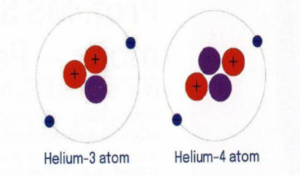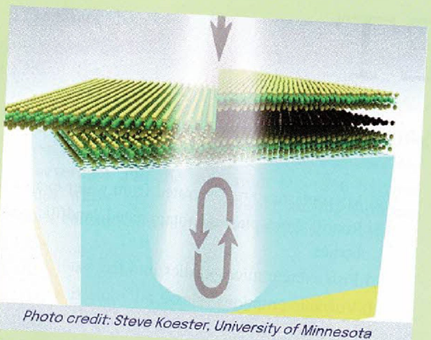Science Reporter Magazine Summary November 2023
Science Reporter Magazine Summary November 2023
- Science Reporter Magazine Summary November 2023
- ARTICLE 1: MOON RACE FOR HELIUM-3
- Global Lunar Exploration Plans
- Helium-3 as a Lunar Resource and Energy Potential
- Helium-3 and Nuclear Fusion
- Practical Challenges in Helium-3 Extraction
- Global Interest and Future Prospects
- ARTICLE 2: Meat Masala Plant
- Allspice Plant (Pimenta Dioica): An Alternative to Meat Masala:
- Cultivation and Harvesting Process
- Potential for Drug Development
- ARTICLE 3: Cooperative Federalism in India
- NITI Aayog’s Role in Building M&E Ecosystem
- Second National Conference on Monitoring, Evaluation, and Learning
- Sessions and Discussions at NCMEL
- Recommendations and Insights from Sessions
- Pathways for Institutionalizing Evaluation at the National Level
- ARTICLE 4: PRINTING IN THREE DIMENSIONS
- Foundations of 3D Printing Technologies
- Material Extrusion:
- Vat Polymerisation:
- Powder Bed Fusion:
- Material Jetting:
- Binder Jetting:
- Direct Energy Deposition:
- Sheet Lamination:
- Recent Advancements and Future Prospects
- NEWS IN BRIEF
- 1) Shape-changing smart speaker lets users mute different areas of a room
- Microphone Deployment with Deep-Learning Algorithms
- Flexible Application in Varied Environments
- Advancements Over Traditional Conference Room Setups
- 2) Novel touch-sensitive Braille learning device for the blind and visually impaired
- Affordable and Self-Learning Solution:
- Single Refreshable Braille Cell Integration:
- Cost-Effective Functionality:
- Educational Focus:
- Conclusion:
- 3) Researchers achieve near-perfect light absorption in atomic-scale material
- Unprecedented Light Absorption for Diverse Applications
- Band Nesting Technique and Simple Fabrication Process
- Conclusion
- 4) IIT Madras Launches Moving Memory’ App
- Spatial App for Metaverse Integration
- Multifaceted Functionality and Interactive Elements
- Inclusive Accessibility through Mobile and Browser Platforms
- Conclusion
Science Reporter Magazine is published by the Council of Scientific and industrial Research (CSIR), India. It’s one of India’s foremost science magazine, aimed at topics like science and technology for a general audience. Established in 1964, the magazine covers a wide range of topics, including but not limited to, environmental science, health, astronomy, and new technologies . Its content is curated to foster curiosity and inform readers about the impact of science in daily life, featuring articles, interviews with scientists, research updates, and science news. Below we have explain all the topics and their summary published in Science Reporter Magazine November 2023 edition:
ARTICLE 1: MOON RACE FOR HELIUM-3
- The Indian Space Research Organisation (ISRO) successfully launched Chandrayaan-3 on July 14, 2023. Subsequently, on August 23, 2023, the mission’s lander and rover achieved a soft landing near the lunar South Pole.
- Chandrayaan-3’s Pragyan rover made a significant discovery, revealing the presence of various elements on the Moon, including aluminum, sulfur, calcium, iron, chromium, titanium, manganese, silicon, and oxygen.
Global Lunar Exploration Plans
- Several countries have rekindled their interest in lunar exploration, marking a shift from a hiatus in lunar missions since the 1970s.
- The United States, through its Artemis mission, aims to send astronauts, including a woman, to the lunar surface by 2025.
- China plans a lunar mission with astronauts in 2030, while Japan, South Korea, the United Arab Emirates, and the USA have lunar missions scheduled for 2023.
- The renewed focus on lunar exploration is driven by a competitive atmosphere between the USA and China.
Helium-3 as a Lunar Resource and Energy Potential
- The return to the Moon is fueled by the desire to study and exploit lunar resources, with Helium-3 emerging as a particularly valuable element.
- Helium-3, a rare isotope of helium, is abundant on the Moon and holds immense potential for energy production.
- Unlike its scarcity on Earth, Helium-3 has been accumulating on the Moon’s surface due to the absence of a significant magnetic field.

- It is estimated that around 1.1 million metric tons of Helium-3 have been deposited in lunar soil, making it a potential game-changer in the field of energy.
Helium-3 and Nuclear Fusion
- Helium-3, derived from the solar wind, offers a safer and more efficient alternative for nuclear power through the process of nuclear fusion.
- In contrast to the radioactive uranium-235 used in nuclear fission on Earth, Helium-3 fusion produces no dangerous by-products and poses no radiation risks.
- The isotope also finds applications in cryogenics, quantum computers, and MRI machines, with the Moon serving as its primary reservoir.

 Practical Challenges in Helium-3 Extraction
Practical Challenges in Helium-3 Extraction
- While the potential of Helium-3 is promising, its extraction poses significant challenges. The lunar soil contains only 50 parts per billion of Helium-3, requiring extensive refining.
- Estimates suggest that mining approximately one million tons of lunar soil would be necessary to produce 70 tons of Helium-3.
- Transporting such large quantities to Earth is a formidable task, leading to alternative suggestions such as establishing a nuclear plant on the Moon and transmitting energy to Earth through microwaves.

Global Interest and Future Prospects
- Russia and China have expressed intentions to mine the Moon, with China’s Chang’e-4 and Chang’e-5 missions making substantial progress in studying lunar soil composition.
- The Beijing Research Institute of Uranium Geology is actively assessing the content and extraction parameters of Helium-3.
- While extracting and utilizing Helium-3 presents practical challenges, the growing interest from major spacefaring nations indicates a potential future where lunar resources play a crucial role in global energy solutions.
ARTICLE 2: Meat Masala Plant
- “Meat Masala” is a widely used Indian spice blend that effortlessly enhances the flavors of meat, fish, and egg curries, turning them into delicious delights.
- Comprising eighteen different spices, including mustard seed, turmeric, coriander seed, fennel seed, cumin seeds, pepper seed, and inner bark of cinnamon, this blend adds depth and richness to various culinary creations.

Allspice Plant (Pimenta Dioica): An Alternative to Meat Masala:
- Pimenta dioica, also known as allspice plant or Jamaica pepper, offers an alternative to conventional meat masala, elevating curry recipes to new heights of deliciousness.
- The dried and ground leaves and fruits of this plant impart a symphony of mouth-watering flavors to dishes, replacing the need for multiple spices.
- Originating from the Greater Antilles, southern Mexico, and Central America, this mid-canopy tree is cultivated in warm regions worldwide, including Maharashtra, Tamil Nadu, Karnataka, and Kerala in India.

Cultivation and Harvesting Process
- In India, Pimenta dioica is cultivated in various states, particularly Maharashtra, Tamil Nadu, Karnataka, and Kerala, as well as in the Western Ghat mountain regions.
- The berry fruits, collected when green and unripe, are dried in the sun to obtain their distinct brown/black color.
- The quality of pimento is influenced by factors such as the region of cultivation, maturity stage during harvest, and storage conditions.
- The plant enters its reproductive phase from the third year onwards, with fruits developing annually from May to August.
Potential for Drug Development
- In addition to its culinary applications, Pimenta dioica holds scientific significance due to the isolation of the active component “Eugenol.” This compound is an active antioxidant molecule, showcasing potential for drug development.
- Eugenol possesses various beneficial properties, including anti-bacterial, anti-fungal, anti-inflammatory, and anti-cancer attributes.
- This highlights the plant’s dual role in both gastronomy and potential medicinal advancements.
ARTICLE 3: Cooperative Federalism in India
- Monitoring and Evaluation (M&E) systems are integral to ensuring accountability in governance, playing a crucial role in good governance structures.
- However, the implementation and governance systems differ across national, state, district, and local levels.
- To strengthen M&E systems in India, efforts must address these complexities and diversities.
- Cooperative federalism emerges as a key strategy for achieving synergies and cross-learning among various levels of government, fostering collaboration from the Union Government to multiple State Governments.
NITI Aayog’s Role in Building M&E Ecosystem
- The Development Monitoring and Evaluation Office (DMEO) of NITI Aayog has been actively working with states to build a robust M&E ecosystem in India.
- The National Conference on Monitoring, Evaluation, and Learning (NCMEL) serves as a platform for sustained conversations in the M&E domain, fostering synergy and coherence among stakeholders.
Second National Conference on Monitoring, Evaluation, and Learning
- The DMEO organized the second NCMEL with the objective of enhancing institutional capacities and empowering governance systems at both the central and state levels.
- The conference addressed emerging issues and challenges, with a central theme of “Monitoring & Evaluation for Sustainable Development through Cooperative Federalism” and six sub-themes.
Sessions and Discussions at NCMEL
- The conference comprised nine sessions, each focusing on different aspects of M&E.
- The first session discussed M&E for maximizing public expenditure efficiency and fostering cooperative federalism.
- The second session focused on the localization of outcome monitoring, emphasizing its role in achieving national development goals.
- The third session highlighted creating robust data systems for decentralized decision-making, emphasizing real-time data availability.
- Subsequent sessions delved into the role of data, technology, and innovation, a participatory and citizen-centric approach, strengthening evaluation capacities in states, and designing inclusive evaluations for specific outcomes.
Recommendations and Insights from Sessions
- Key takeaways included the need for capacity building at all government levels, efficient allocation of resources through local-level outcome monitoring, streamlined data collection for decentralized decision-making, leveraging technology advancements for M&E, and adopting a participatory approach involving citizens.
- The conference emphasized the importance of evaluating outcomes for marginalized groups and addressing challenges related to sustainable food systems and livelihoods.
Pathways for Institutionalizing Evaluation at the National Level
- The conference’s final session focused on pathways for institutionalizing evaluation at the national level, offering recommendations to address sectoral evidence needs, enhance outcome budgeting processes, and support outcome achievement for strengthening state evaluations.
- Overall, the NCMEL served as a valuable platform for advancing discussions on M&E, promoting collaboration, and addressing challenges in India’s diverse governance landscape.
ARTICLE 4: PRINTING IN THREE DIMENSIONS
- In recent years, 3D printing technology has made remarkable strides, transforming various industries, with the medical field being a standout example.
- No longer reliant solely on traditional organ transplants, patients in dire need can now benefit from 3D-printed organs tailored to their specifications.
- This breakthrough marks a paradigm shift, where Charles Hull’s patented “stereolithography” technique in 1986 paved the way for the evolution of 3D printing.
- Hull’s innovation spurred the establishment of 3D Systems, attracting attention from diverse sectors, including vehicle manufacturing, R&D labs, and especially the medical field.
- The versatility of 3D printing extends beyond imagination, with its impact stretching across multiple industries.
Foundations of 3D Printing Technologies
- The process of creating a 3D printed object involves several key steps, starting with imagining the object and creating its computerized image.
- The International Standards Organization (ISO) has classified additive manufacturing techniques into seven main classes, providing a uniform structure worldwide.
- Four notable techniques within this classification are Material Extrusion, Vat Polymerisation, Powder Bed Fusion, and Material Jetting.
Material Extrusion:
- Material extrusion, likened to a hot glue gun, involves depositing materials like metals, plastics, or biomaterials onto a build platform through a heated spout.
- This method, encompassing subtypes like Fused Deposition Modelling (FDM) and Bio 3D printing, allows for diverse applications.
- While Bio 3D printers utilize bio-inks composed of living matter, construction 3D printers, on the other hand, are large-scale, capable of creating buildings but may lack precision and durability.

Vat Polymerisation:
- Vat Polymerisation employs liquid resin hardened layer by layer using light sources like lasers or digital projectors.
- Techniques such as Stereolithography (SLA) and Digital Light Processing (DLP) showcase variations in light sources, yielding impressive dimensional accuracy and smooth surface finishes.
- Applications range from jewelry casting to medical prototypes, showcasing the versatility of this technology.

Powder Bed Fusion:
- In Powder Bed Fusion, a bed filled with powder material, such as plastic, metal, or ceramic, is selectively melted layer by layer using energy sources like lasers or electron beams.
- Selective Laser Sintering (SLS) and Laser Powder Bed Fusion (LPBF) exemplify this technique, producing precisely made objects with exceptional mechanical properties.
- Despite high costs and slow production rates, this method finds application in aviation, medical, and industrial manufacturing.

Material Jetting:
- Material Jetting allows for the creation of objects with varied colors and textures, depositing tiny droplets of material solidified by UV light.
- Though versatile, it comes with limitations in material range and cost.
- Techniques like Aerosol Jetting and Nano Particle Jetting showcase applications in electronics, industrial design, and medical prototypes.
Binder Jetting:
- Binder Jetting combines powder bed technology and material jetting, depositing powder layers and binding them with liquid droplets.
- This cost-effective method finds applications in creating solid metal objects, albeit with the need for post-processing to enhance mechanical strength.
Direct Energy Deposition:
- Direct Energy Deposition, a diverse class of 3D printing, includes subclasses like Laser Direct Energy Deposition (L-DED) and Wire Arc Additive Manufacturing (WAAM).
- While fast and cost-effective for creating metal structures, precision and surface finish are compromised. This technology excels in repairing high-end components across various industries.
Sheet Lamination:
- Sheet Lamination is distinct in its top-down approach, stacking thin sheets of material and shaping them with a laser-controlled beam.
- Despite generating waste and lacking dimensional accuracy, this technique is used for rapid prototyping due to its fast and cost-effective nature.

Recent Advancements and Future Prospects
- As evidenced by India’s first 3D-printed post office in Bengaluru, the applications of 3D printing continue to expand rapidly.

- From constructing buildings to developing medical devices like 3D-printed gloves for stroke rehabilitation, the potential of 3D printing is vast. Recognizing this, the Government of India has unveiled a National Strategy on Additive Manufacturing.
- With the technology evolving and becoming more accessible, the future of 3D printing holds limitless possibilities, from home use to advancements in electronics, nanotechnology, and artificial intelligence.
NEWS IN BRIEF
1) Shape-changing smart speaker lets users mute different areas of a room
- A team from the University of Washington has introduced a groundbreaking shape-changing smart speaker that employs self-deploying microphones to revolutionize room acoustics.
- The study, detailed in Nature Communications, showcases the development of a system capable of dividing rooms into distinct speech zones and accurately tracking individual speakers.
Microphone Deployment with Deep-Learning Algorithms
- The smart speaker’s functionality is enhanced by deep-learning algorithms, enabling users to mute specific areas and manage simultaneous conversations, even when faced with similar voices from adjacent individuals.
- Resembling a fleet of miniature Roombas, each measuring around an inch in diameter, the microphones autonomously deploy and retract from a charging station.
- This mobility facilitates seamless movement between environments and automatic setup, enhancing the system’s versatility.
Flexible Application in Varied Environments
- The system’s adaptability is highlighted by its potential use in various settings, such as conference room meetings.
- Instead of relying on a central microphone, this innovative approach allows for improved control of in-room audio.
- The ability to dynamically alter speech zones and track speakers’ positions introduces a new level of flexibility in managing audio in diverse environments.
Advancements Over Traditional Conference Room Setups
- In contrast to traditional setups with static microphones, this shape-changing smart speaker offers a dynamic solution that responds to the evolving needs of users.
- The deployment of self-moving microphones not only optimizes audio control but also provides a portable and automatic setup, eliminating the constraints of fixed central microphones and enhancing the overall conferencing experience.
2) Novel touch-sensitive Braille learning device for the blind and visually impaired
- Researchers at IIT Kanpur have introduced a groundbreaking innovation in the realm of accessible education for the visually impaired.
- Their creation, titled the “Single Refreshable Braille Cell Based Braille Learning Device with a Touch Sensitive Array,” holds immense promise in transforming the lives of countless individuals with visual impairments.
Affordable and Self-Learning Solution:
- This innovative device stands out as an affordable and self-learning solution, addressing the challenges faced by visually impaired individuals in accessing educational resources.
- The potential impact of this technology is far-reaching, as it opens up opportunities for independent learning and skill development.
Single Refreshable Braille Cell Integration:
- Traditionally, devices converting electronic text into Braille characters rely on multiple braille cells to achieve the required functionality.
- However, the IIT Kanpur team has seamlessly integrated a cutting-edge touch array with a single refreshable Braille cell.
- This integration allows the device to deliver a level of functionality comparable to its multi-cell counterparts, but at a significantly reduced cost.
Cost-Effective Functionality:
- The integration of a touch-sensitive array with a single braille cell not only enhances the functionality of the device but also contributes to cost-effectiveness.
- This approach ensures that visually impaired individuals can access high-quality Braille learning without the prohibitive costs associated with existing multi-cell devices in the market.
Educational Focus:
- The primary focus of the device is to instruct users in the fundamentals of Braille, covering basic characters, words, and sentences.
- By catering specifically to educational needs, this technology empowers visually impaired individuals to acquire essential Braille skills independently, promoting a more inclusive and accessible learning environment.
Conclusion:
- The “Single Refreshable Braille Cell Based Braille Learning Device with a Touch Sensitive Array” from IIT Kanpur represents a significant leap forward in accessible education for the visually impaired.
- Its affordability, self-learning capabilities, and innovative integration make it a promising solution with the potential to positively impact the lives of individuals with visual impairments.
3) Researchers achieve near-perfect light absorption in atomic-scale material
- A groundbreaking discovery led by a University of Minnesota research team unveils an atomically thin material capable of absorbing almost 100% of light at room temperature.
- The potential applications of this innovation span a wide range, from advancements in optical communications to significant contributions in stealth technology.
- The team’s findings have been published in the prestigious journal Nature Communications, highlighting the significance of their achievement.
Unprecedented Light Absorption for Diverse Applications
- Materials possessing the ability to absorb nearly all incident light are of immense value in applications involving the detection or manipulation of light.
- In this context, the researchers have successfully created a “near-perfect absorber” through the utilization of a technique called band nesting.
- This process allows the manipulation of the already unique electrical properties inherent in a material composed of merely two to three layers of atoms.
- The implications of this near-perfect light absorber extend beyond conventional uses, opening doors to innovations in various technological domains.
Band Nesting Technique and Simple Fabrication Process
- The researchers achieved this remarkable feat without resorting to complex nano-patterning methods.
- Instead, they employed the band nesting technique to enhance the material’s inherent properties.
- This not only simplifies the fabrication process but also significantly reduces costs, making the technology more accessible.
- The absence of intricate nano-patterning methods not only streamlines the manufacturing process but also positions this material as an easier-to-scale-up alternative compared to other light-absorbing materials currently under investigation.
Conclusion
- The University of Minnesota-led team’s engineered atomically thin material emerges as a game-changer in the realm of light absorption technology, promising advancements in optical communications and stealth applications while boasting a fabrication process that is both cost-effective and scalable.
4) IIT Madras Launches Moving Memory’ App
- The Centre for Memory Studies at the Indian Institute of Technology Madras (IT Madras) has unveiled the ‘Moving Memory’ app, integrating Augmented Reality (AR) and Virtual Reality (VR) technologies simultaneously.
- This innovative app captures diverse moving models of memory through digital reconstruction, representing a significant leap in the field of memory studies.
Spatial App for Metaverse Integration
- Positioned as a spatial app, ‘Moving Memory’ is designed with the potential to seamlessly integrate into the metaverse world.
- Users can engage with the app by selecting any preferred avatar, allowing them to navigate through immersive three-dimensional spaces.
- This spatial aspect enhances the overall user experience and marks a significant departure from traditional memory study methodologies.
Multifaceted Functionality and Interactive Elements
- The app is rich in features, embedding additional layers of video, audio, 3D images, and interactive elements.
- These elements contribute to the creation of a multifaceted environment, offering a dynamic and engaging user experience.
- Beyond its entertainment value, the app serves as a model for sustainable and heritage-oriented pedagogic and research approaches, making it a valuable tool for academic and cultural exploration.
Inclusive Accessibility through Mobile and Browser Platforms
- One notable aspect of the ‘Moving Memory’ app is its inclusive accessibility. Users can access it through mobile apps compatible with both Android and iOS, ensuring a broad user base.
- Additionally, the app is accessible through browser-based platforms, further enhancing its inclusivity and versatility.
- This dual accessibility feature sets it apart from other applications in the AR and VR space, making it user-friendly and widely available.
Conclusion
- The ‘Moving Memory’ app from IIT Madras presents a pioneering approach to memory studies by combining AR and VR technologies.
- Its spatial design, multifaceted functionality, and inclusive accessibility make it a promising tool for both academic research and cultural exploration, with the added potential to contribute to the evolving landscape of the metaverse.

